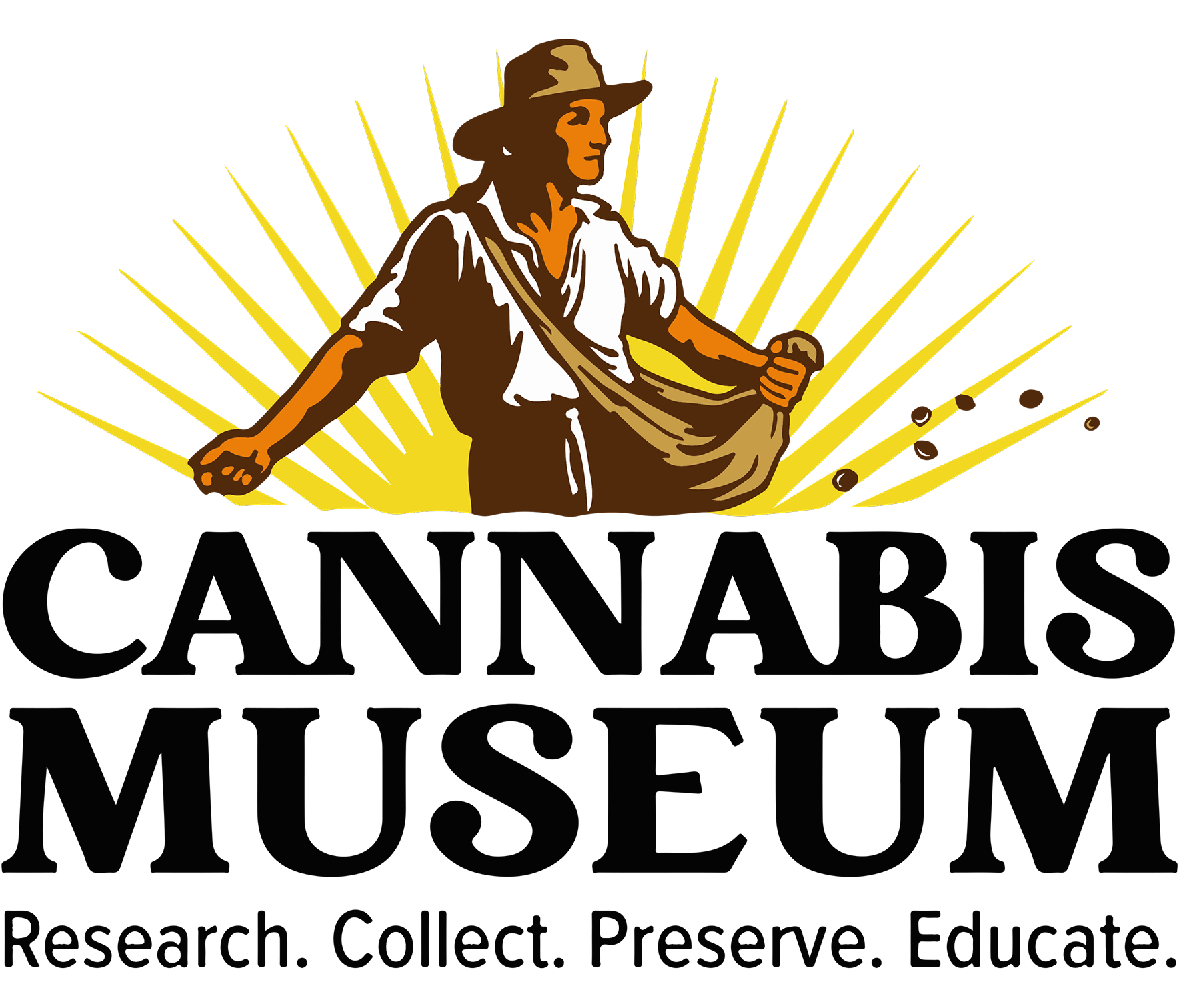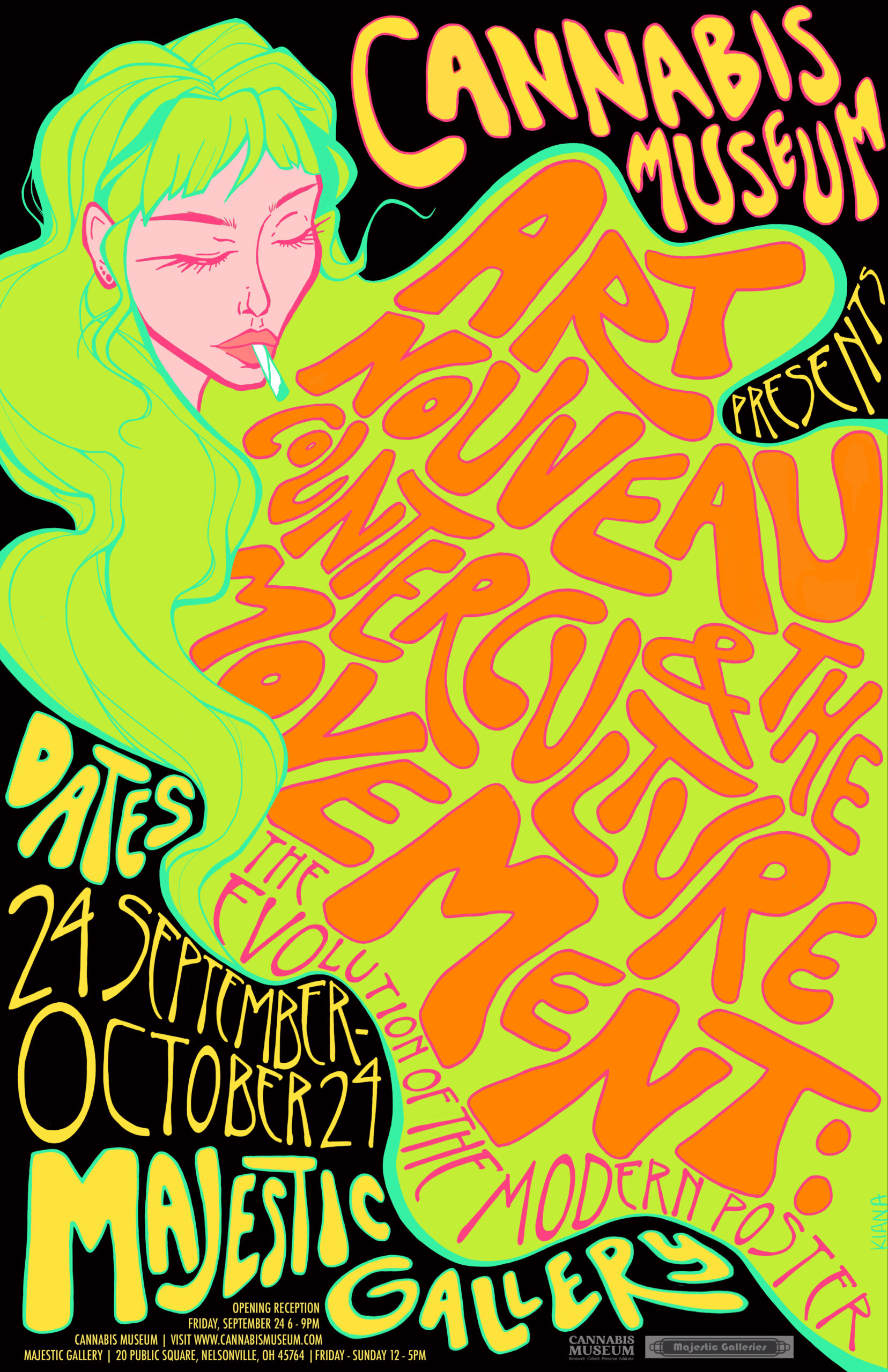Cannabis Museum and the Majestic Galleries in Nelsonville are happy to announce the upcoming exhibition, Art Nouveau and the Counterculture Movement: The Evolution of the Modern Poster, September 24th—October 24th, 2021.
The opening reception will be held during Nelsonville’s Final Friday, September 24th,
6-9 PM, and is located at 20 Public Square in Nelsonville, Ohio, 45764.
The exhibition can be viewed September 24th through October 24th with open gallery
hours from 12-5 PM, Friday, Saturday, and Sunday.
This exhibition is curated by Tiana Hough, Curatorial & Collections Management Graduate Intern, as part of her capstone project for the Master of Art Administration degree at Ohio University, 2021.
The exhibition showcases a selection of posters from the Cannabis Museum’s collection. The selected posters, as part of this exhibit, outline the linear progression of art in advertising posters and illustrate how two different artistic movements paralleled each other: The Art Nouveau style of the 1890s is juxtaposed with psychedelic art from the 1960s.
The evolution of modern advertising poster begins with the JOB Rolling Paper Co., which made cigarette rolling papers. The company commissioned several noteworthy artists, such as Alphonse Mucha, to create posters for their advertisement campaigns. In the 1960s, there was a revival of the Art Nouveau aesthetic, characterized by its prominent female figures and flowing forms. JOB Rolling Paper Co. advertisements became associated with the hippy style and the counterculture movement. A collective of poster artists living in San Francisco, known as the “Big Five,” infused their work with Art Nouveau stylistic traits. The “Big Five” created psychedelic rock and roll dance concert posters during the height of the counterculture movement. Artists like Gary Grimshaw, located in Detroit, also had a significant impact on the psychedelic poster era. This exhibit features Grimshaw and the “Big Five,” including Wes Wilson, Rick Griffin, Stanley Mouse, Alton Kelley, and Victor Moscoso.

